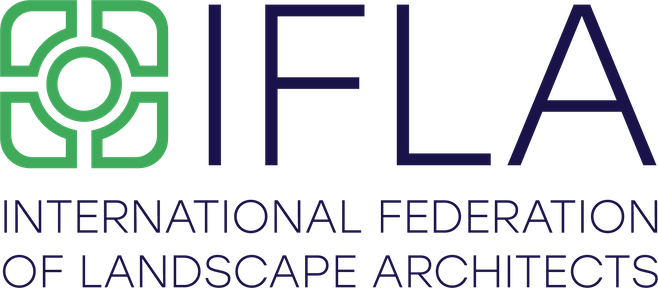World Landscape Architecture Month 2019
We keep celebrating World Landscape Architecture Month. And for IFLA it is also a celebration: we have reached IFLA News issue #100 . It represents the work and efforts of many voluntary people that are behind every number.
We want IFLA News to be the means to keep promoting the profession, as well as to be a window to the world to show what we do. Many things in the landscape architecture field happen around the world, please share them with us. We want you to make IFLA News yours, so do not hesitate on sending your contributions to be published here.
There is an innumerable list of names of all the ones that have participated with their collaborations to make IFLA News possible. Thanks to all!
Monica Pallares
Chair IFLA Committee on Communications and External Relations
The rich question of “What is landscape architecture” is one I have probably tried to answer countless times to many different people. It has come to a point where I believe that what we practice and do are more important than what we think or say and what people think about what has been given is ultimately more important than what we have done. Landscape architecture as we (landscape architects) understand it embodies complexity. But to most people, it should be simple.
A recent encounter I had with some people in a village in Hera, Timor-Leste, probably summed up for me the essence of what landscape architecture really is. I was there in Timor to lead a resilience building project for some of the communities under the IFLA Asia Pacific region’s new initiative. Prior to that I needed to visit the village to understand the issues, problems and constraints that the villagers are facing, bearing in mind that the community probably has little idea about what we do and the kinds of education we have all enjoyed. They live in absolute poverty with a lack of water, surviving and managing their lives on a daily basis, with limited resources and sometimes skills to maintain their livelihood.
There was one conversation I had with an elderly man that I will never forget. He lived in the Sidara village and looked like he was observing me from afar, talking to the villagers. It took some time before he was willing to open up and feel comfortable to have a conversation with me. He spoke in Tetun but a local person who also speaks English kindly translated our conversation. Below is part of that conversation (DT = Damian Tang; V = villager):
DT: What is important to you here? What do you need?
V: Water. Water for drinking. For food.
DT: I see. Does it rain much here?
V: No water for many months. Rain one time, two times. One week or two-three weeks. Then no more. River water when rain cannot use. Dirty and make children sick.
DT: I understand. You grow vegetables? Farming?
V: Yes I help a little. But vegetables here die when no water. Sometimes can grow. Sometimes cannot grow.
DT: Understand. We can help. We are here to help.
V: Young man, what you do?
DT: We are landscape architects…like architects design building..but we design with the land and for the people. We try to understand your land, understand your problems, and then try to find solutions.
V: Oh I don’t know there is such people like you. Obrigado! Obrigado!
DT: What do the children do here?
V: Many have no money to go school. So they wander around. They play around the dry river, the hills and everywhere. Some very naughty. They break things and even steal things.
DT: We will try to help you find water. Help your farming. Even try to help the children. Give them some meaningful things to do and make them happy if we can.V: What you say you are? Whatever you do, thank God for having you people! Obrigado Maromak!
Project Sidara in Timor-Leste is the pilot project for community resilience building in our regions. It is a new initiative undertaken by IFLA Asia Pacific region sponsored by the landscape industry. It is a project that demonstrates landscape without borders and the professional spirit behind that concept. Being able to lead this project personally is a privilege. The project has successfully completed its first stage where clean water was found at a depth of 72m in the beginning of this month through a water boring contract. The project received support of more than USD18,000 from several sponsors. It now enters into second phase when we will improve the micro-farming conditions and impart skills to the community for their livelihood. There is also a sponsor who will be bringing in children’s play equipment for the community. This project is made possible with the generosity of partners and sponsors from the industry and profession who share the same vision and desire to use what we know and what we have to help those who are less privileged than us.
For me, this project has truly become an event that fully celebrates the month of World Landscape Architecture!






